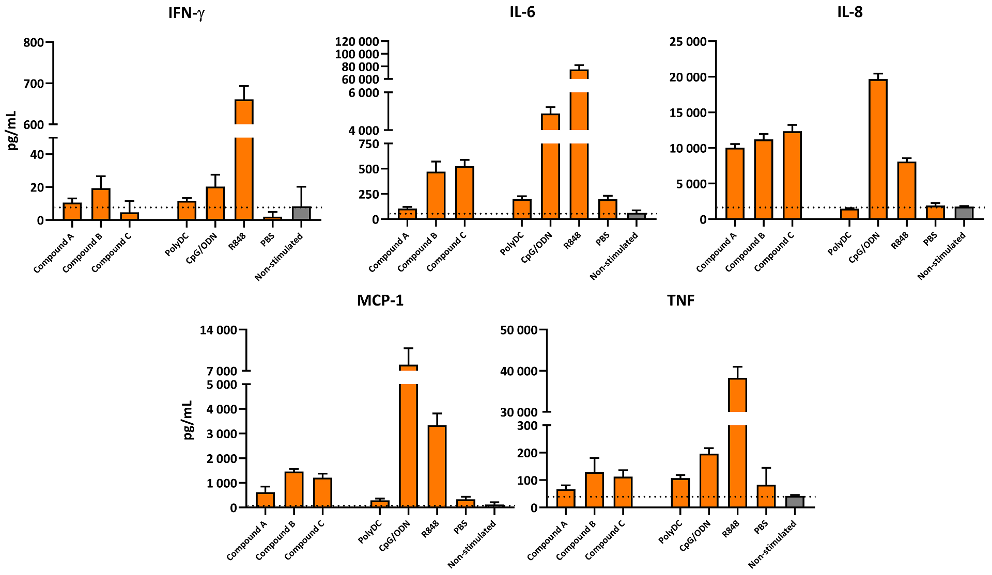
Whole blood immune cell activation assay
Blood consists of several different (immune) mediators, each with their own role and sensitivity regarding stimulatory and inhibitory compounds. Assessing whether your compound of interest has immunomodulatory effects in a whole blood assay can provide valuable insights into in vivo effects.
At Sanquin, we are uniquely equipped to perform whole blood activation assays. We can make use of different anticoagulants, each with their own benefits for subsequent assays.
 Typically, whole blood immune cell activation is assessed by whole blood culture with your compound of interest and, if required, a stimulatory agent. The effect of your compound of interest on cell viability and cytokine production can then be assessed via multiple methods.
Typically, whole blood immune cell activation is assessed by whole blood culture with your compound of interest and, if required, a stimulatory agent. The effect of your compound of interest on cell viability and cytokine production can then be assessed via multiple methods.
Advantages of the whole blood immune cell activation assay
-
Depending on your wishes, 500 µl of whole blood per donor/subject is sufficient for read-out
-
High-throughput measurement of many samples possible (CBA or luminex possible)
-
Can be combined with other whole blood assays, i.e. to assess basophil, B cell, or complement activation
Example of how our whole blood immune cell activation assay can contribute to your project
Assessing the effect of a compound on a broad panel of cytokines produced by immune cells via a whole blood assay
 Whole blood from healthy donors (n=3) was cultured together with potentially immunostimulatory compounds for 6 hours. Serum was collected and cytokine production was assessed by CBA. Graphs show triplicate results from 1 representative donor.
Whole blood from healthy donors (n=3) was cultured together with potentially immunostimulatory compounds for 6 hours. Serum was collected and cytokine production was assessed by CBA. Graphs show triplicate results from 1 representative donor.
Whole blood assay to determine possible effects of compound on cell viability and cytokine production
 Whole blood from healthy donors (n=3) was stimulated with R848 in the presence of compounds for 6 hours. Serum was collected and cytokine production was assessed by ELISA, while cell viability was assessed via a Cell Titer Glow assay. Graphs show triplicate results from 1 representative donor.
Whole blood from healthy donors (n=3) was stimulated with R848 in the presence of compounds for 6 hours. Serum was collected and cytokine production was assessed by ELISA, while cell viability was assessed via a Cell Titer Glow assay. Graphs show triplicate results from 1 representative donor.
Our other whole blood assays
By using whole blood, interactions between different cell types and serum components can still occur, reflecting the in vivo situation.

